Health Condition Of Political Prisoners Deteriorating In Iran
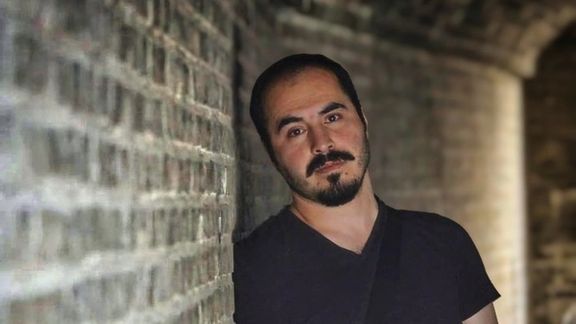
Family members of some Iranian political prisoners have warned about the health condition of the detainees who are deprived of having access to medical care.

Family members of some Iranian political prisoners have warned about the health condition of the detainees who are deprived of having access to medical care.
Sakineh Ronaghi, the sister of Hossein Ronaghi, a human rights activist and journalist, wrote on her Instagram page that her brother is in a “very serious condition” and he will not survive more than five or six days if he is not admitted to hospital immediately.
The dissident blogger and freedom activist Hossein Ronaghi was arrested over his support for protests late in September, and prison guards broke his legs in detention.
Ahmad Ronaghi, his father, also released a video message saying that his son called him from prison on Thursday saying that “he is not feeling well at all.”
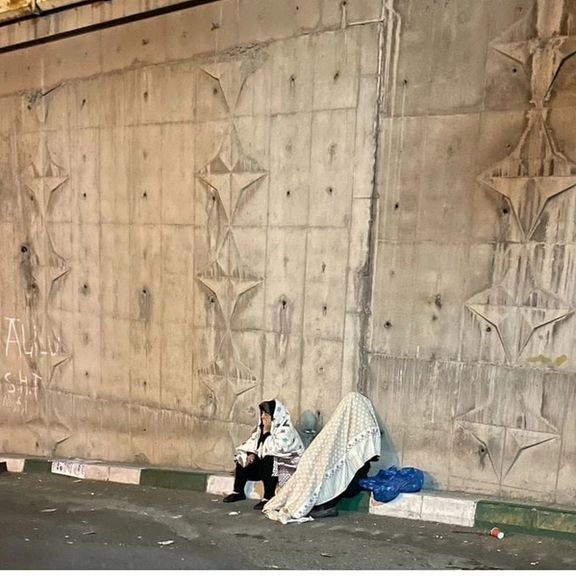
He said although doctors insisted “Hossein should be transferred to hospital immediately,” the prison authorities kept him in Evin prison’s infirmary.
Meanwhile, Hossein Sadeghi, father of civil activist Arash Sadeghi, pointed out that his son is suffering from bone cancer, warning about his health condition and the consequences of his lack of access to medicines.
"In a phone call, we found out that Arash's medications are not available in the prison infirmary, and we are not allowed to get medicines from outside,” he wrote on his Instagram page Thursday.
Arash Sadeghi was arrested on October 12 during anti-regime protests. In May 2021, he was released from Rajaei Shahr prison in Karaj after serving a five years and six months sentence.

As nationwide protests in Iran entered their third month on Friday, there is no sign of unrest abating as mourning ceremonies for protesters morph into new rallies.
Friday has been an action-packed day across the country and in southeastern province of Sistan and Baluchestan where cities and towns were scenes of large antigovernment protests. People in the cities of Chabahar, Iranshahr and Khash as well as provincial capital Zahedan held massive gatherings following Friday prayers and chanted slogans against the Islamic Republic and its ruler Ali Khamenei.
People in Zahedan were chanting slogans for freedom and also in honor of Khodanour Lajoie, a young man shot dead on October 1. A photo of Lajoei chained to a lamppost by the police several months ago has turned into a symbol of the government’s injustice in the impoverished province.
Videos published on social media showed resident of Khash chanting “This is the year of blood, Seyyed Ali (Khamenei) will be gone,” as another group of people were dislodging a street sign carrying the name of IRGC’s extraterritorial Quds force commander Qasem Soleimani, an icon for the Islamic Republic who was killed in a US targeted air strike in Iraq. Since the beginning of the current wave of protests, ignited by the death in custody of 22-year-old Mahsa Amini, a lot of statues and banners of Islamic Republic figures have been destroyed or burnt down by people. The Islamic Republic has put forces on guard specially to protect its symbols.
In his Friday Prayer sermon, Sunni religious leader Molavi Abdolhamid said the visit of a delegation sent by Supreme Leader Ali Khamenei did not meet the expectation of his people, emphasizing that he would not be threatened or bribed into condoning the bloodshed in Zahedan and Khash. Abdolhamid, generally known as one of the most influential political and religious leaders in Iran as nearly 15 million Sunnis listen to him, had earlier held Khamenei accountable for the attacks on protesters. He noted that he would negotiate and interact but would never bargain over the blood of the people.
Tehran Friday Imam Mohammad Javad Haj Ali Akbari went to Zahedan this week as Khamenei's envoy to try to pacify growing opposition among Sunnis after two attacks that killed 100 Sunnis. Following his meeting with Abdolhamid, Akbari harshly criticized him and other Sunni clerics for being ungrateful for what he said the Islamic Republic has done for them.
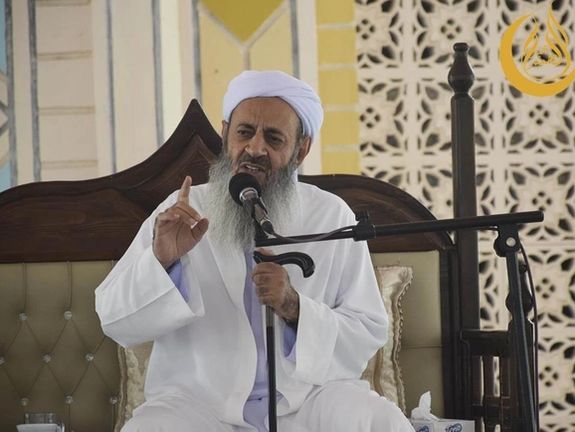
Reports from Tehran said that during the meeting Abdolhamid complained about government discrimination against Sunnis and said that Khamenei has not replied to several of his letters. Abdolhamid wrote in a November 16 tweet, "We expected the Leader's envoy to see the realities on the ground, condemn the crimes that were committed in Zahedan's bloody Friday, and appease the family members of those who have been killed or wounded in the attacks and to uphold their rights rather than threatening and intimidating the oppressed people."
In addition to Sistan and Baluchestan, people in many cities such as Tabriz and Tehran were out on streets chanting slogans focused on the death of a nine-year-old boy, identified as Kian Pirfalak, who was killed in the city of Izeh in Khuzestan province on Wednesday.

Iran's state media reported on Friday that three Basij militiamen were killed during protests in the religious city of Mashhad in eastern Iran on Thursday.
Mohsen Delavari, the governor of Mashhad, said that these Basij forces were killed in “knife attacks” by people who he called “rioters”.
The authorities of the Islamic Republic call the protesters “rioters”.
According to Delavari, several “thugs and rioters” were planning to close down stores with “threats and intimidation”, but when Basijis “intervened to disperse” them “the rioters killed two Basij members and injured three others with cold weapons.”
The governor of Mashhad identified the dead as Daniyal Rezazadeh and Hossein Zeinalzadeh. Iranian state TV later identified a third Basij militiaman killed in Mashhad as “Ebrahim Ghaffarian”.
Accusing the opponents of the Islamic Republic of attacking government’s repression forces comes in a situation when hundreds of protesters have lost their lives in two months of nationwide protests due to government violence, including gunshot wounds by the security forces, law enforcement, plainclothes and Basij militiamen.
On Thursday, state media also reported that a police colonel was killed in western city of Sanandaj, and his car was set on fire. On Wednesday, it was also reported that a commander of a special unit of the police force was killed in central city of Esfahan.
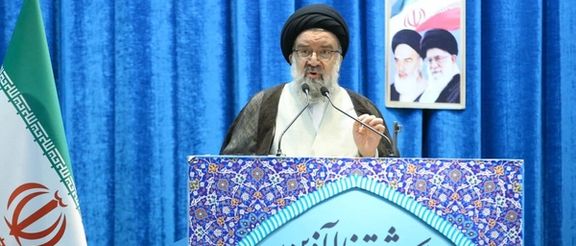
Iran's clerical regime signaled in Friday sermons that it will not compromise in meting out tough punishment to protesters, calling them rioters and enemies.
The message was delivered by Tehran’s Friday Prayer Imam and firebrand cleric Ahmad Khatami, who said according to religious principles, any attempt to weaken the regime is “haram” or forbidden and “we should deal with rioters using the toughest punishments.”
Friday prayer imams routinely send messages on top priorities and policies of the regime's hardliner core, controlled by the office of Iran's ruler Ali Khamenei.
Khatami categorized protesters into “murderers”, people “opposing God” and those who “spread lies and agitate public opinion”, saying that all are subject to death penalty.
Earlier this month, 227 hardliner members of Iran’s parliament sent a letter to the Judiciary asking for the death penalty for some protesters. The Judiciary, controlled by Supreme Leader Ali Khamenei has already sentenced several detainees to hanging.
But before detaining people, security forces resort to extreme violence on the streets, using any weapon they have without regard to age, gender or risk involved. Those who have military weapons shoot to kill.
Estimates by human rights monitoring organizations have put the death toll of protesters killed by a variety of regime forces at a minimum of 350 since mid-September. Estimates also say that around 15,000 have been arrested.
Officials, following the initial signal by Khamenei, have dubbed the two-month-old protests “riots” and the protesters “rioters”. Some of those arrested have been charged with “moharebeh” or fighting God, which is the most serious offense in Iran’s Islamic law and can trigger the death penalty. Many others among thousands of detainees will probably face the same accusation.
Khatami tried to balance his tough words by saying that “protests are not forbidden in Islam,” and the regime was only reacting to “rioters”, but the fact remains that security forces used force against the first small gatherings on September 16 when news broke that the 22-year-old Mahsa Amini had died in hospital after being beaten on the head by ‘morality police’.
According to the constitution, unarmed citizens are allowed to protest, and the interior ministry is supposed to receive applications and issue permits for assembly. But except government rallies, no group has ever received a permit for a protest.
Khatami blamed the government’s use of force on “rioters burning ambulances,” while hundreds of videos published in two months shows security forces attacking all gatherings everywhere, independent of what protesters might have done or not.
The hardliner cleric in his sermon also revealed the true thinking of the ruling circles, saying that the protesters’ aim is “overthrowing the regime” and this will not be tolerated. He also admitted that protests are weakening the foundations of the governing system.
Khatami also mentioned Iran’s dismemberment, a danger the government loves to speak about since protests broke out, to scare the average citizen from the consequences of the antigovernment movement. He claimed that Western countries plotting against Iran will be disappointed to see unity prevailing.
However, there has been little evidence of any separatist influence among protesters, who all emphasize ethnic solidarity between different regions of the vast country.
In fact, Mahsa Amini was a Kurd from a Kurdish city, but people in other parts of the country immediately came out to protest her killing in police custody.
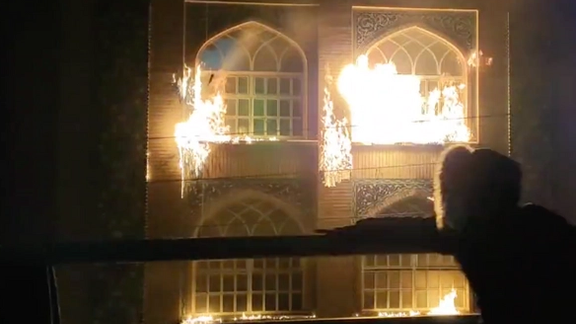
During intense unrest Thursday night, antigovernment protesters set fire to the house and museum of Ayatollah Ruhollah Khomeini, the founder of the Islamic Republic.
This was the ultimate act of defiance against the clerical regime that has failed to control nationwide protests since mid-September. The demonstrations have turned into a popular movement, reaching the farthest corners of the country, that simply aims to overthrow the Islamic Republic.
The demonstrations Thursday night commemorating those killed by government forces in the past few days drew into the night while protesters set fire to government buildings and seminaries.
In Khomein, the birthplace of Ayatollah Khomeini, people attacked and torched his family house which was turned into a museum in recent years. This unprecedented act of defiance became a sensation on Persian social media, with tens of thousands of people watching and sharing the video of the incident.
Videos show angry demonstrators also set fire to a seminary in the religious city of Qom near Tehran, as young people have targeted clerics in the street for verbal abuse and flipping their turbans off their heads.
Stones and Molotov Cocktails have become the main weapons for protesters who pelt anti-riot forces and set fire to large government propaganda banners in the streets. They also attack police stations and more often torch buildings used by the Revolutionary Guard’s Basij militia, who play a major role in attacking and killing protesters.
Government media said Friday that three Basij militiamen were killed Thursday in the religious city of Mashhad, while videos emerged showing other government agents wounded and running naked in the streets.
Overnight protests were also staged in scores of cities including Mashhad, Shahrekord, Masal, Sanandaj, Esfahan, Arak, Yazd, Saqqez, Lahijan, Bandar Abbas, Bijar, and Kermanshah. The geographic distribution of these cities covered from the northeast to the south and west of the country, with large protests also in central Iran.
Anit-regime slogans were chanted in tens of neighborhoods in capital Tehran.
Security forces fired live rounds and tear gas in several cities to crack down on the protesters.
In Bukan, people attacked government buildings torching a justice ministry office.Protesters in Rasht, also set fire to the office of a member of parliament.
Angered by killing of a 10-year-old child in Izeh in the oil-rich Khuzestan province, activist groups have called for mass protests across 20 cities on Friday.
According to Oslo-based Iran Human Rights Organization, at least 342 people including 43 children and 26 women had been killed by security forces in the ongoing nationwide protests until Wednesday.
Thousands have also been arrested in the last two months, with some being at risk of receiving death sentences for security-related charges.
Friday is expected to be another intense day of protests, as anonymous activists have called for continuing nationwide demonstrations until Monday, November 21.
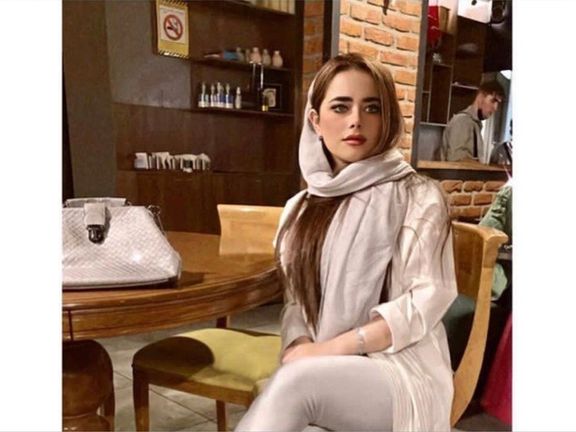
Security forces have attacked people attending the funeral ceremony of a 23-year-old woman who was killed by regime forces in the northwestern city of Tabriz.
People chanted slogans at the clerical regime during the burial ceremony of Aylar Haqqi on Friday morning in the presence of a large crowd of mourners in Tabriz cemetery.
Aylar Haqqi, a medical student had reportedly taken refuge in a building during Wednesday demonstrations, where the regime agents found her and pushed her from the top of the building. A rebar pierced through her abdomen and out from her back. However, the regime announced she had died after falling into a construction dig.
Meanwhile, some sources quote a relative of Aylar saying she has been killed by direct fire of security forces, but in order to deliver her body to her parents security agents forced them to say she died after falling from top of a building.
Reports on social media say another young person named Ali Araghi was also killed in Tabriz on Wednesday night.
Meanwhile, an anonymous group called Freedom-seeking Revolutionaries of Azarbaijan in a statement called on people in all cities of the province to take to streets every day beginning Friday.
According to Iran Human Rights Organization, security forces had killed at least 342 people, including 43 children and 26 women as of Wednesday. There is no new estimate for the past two days of intense protests.